Mexico's Most Threatened Species
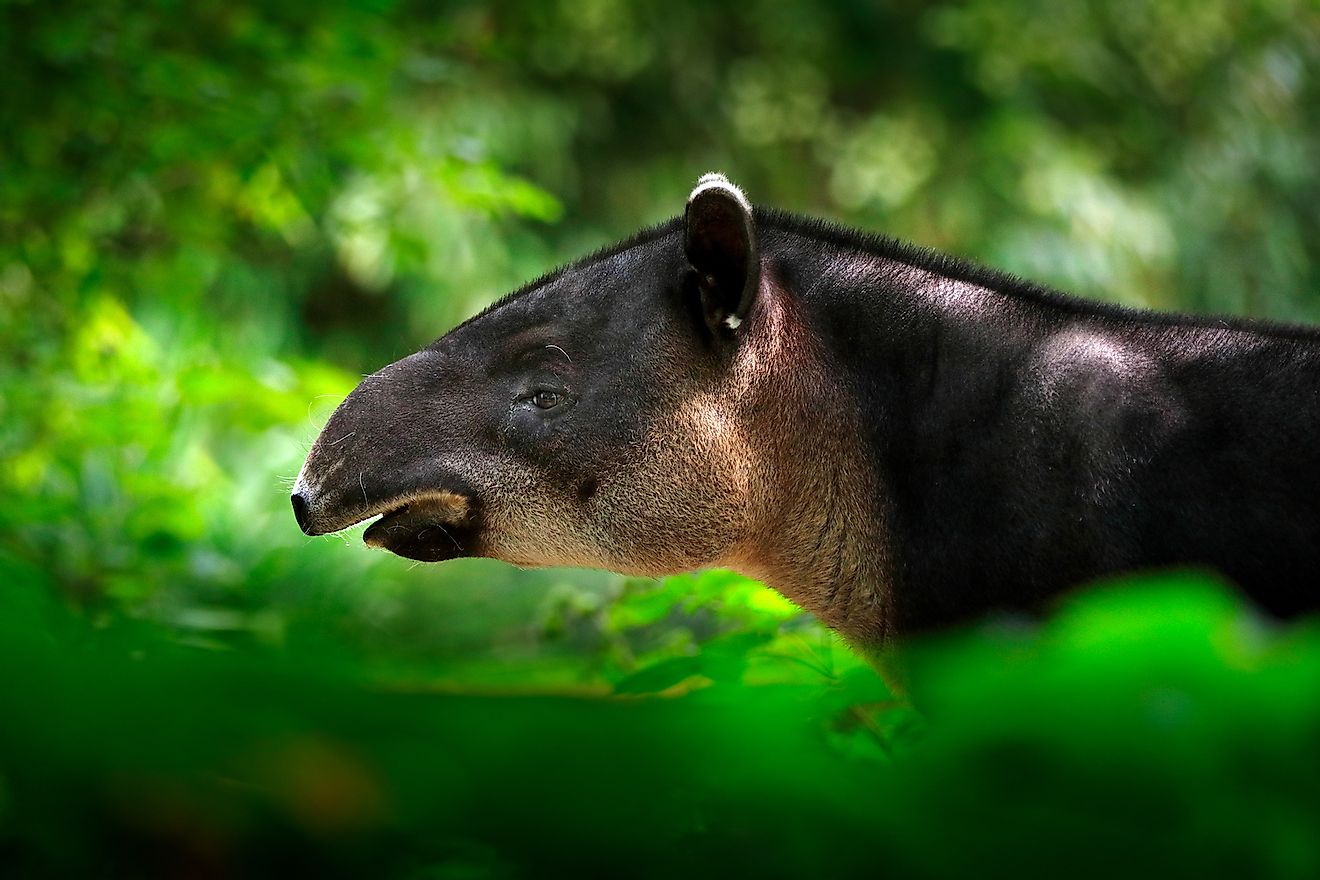
- Marine life are some of the most at risk species on the Endangered IUCN Red List
- Illegal fishing is one of the largest causes for species population decline with marine animals in the Gulf of Mexico.
- Many Mexican mammals are suffering due to habitat fragmentation and a loss of natural landscapes.
The human impact on the animals of this world has been felt worldwide in a variety of ways. While strides are being taken to ensure the safety of at-risk species, there are still a large number of animals that are considered threatened. Time is short, and a lot needs to be done to bring these species back from the brink. Like every country in the world, Mexico is also home to many species that demand immediate protection from human action. Here are 10 prominent Mexican species that are considered Endangered, or Critically Endangered on the International Union for Conservation of Nature Red List (IUCN for short).
10. Nassau Grouper
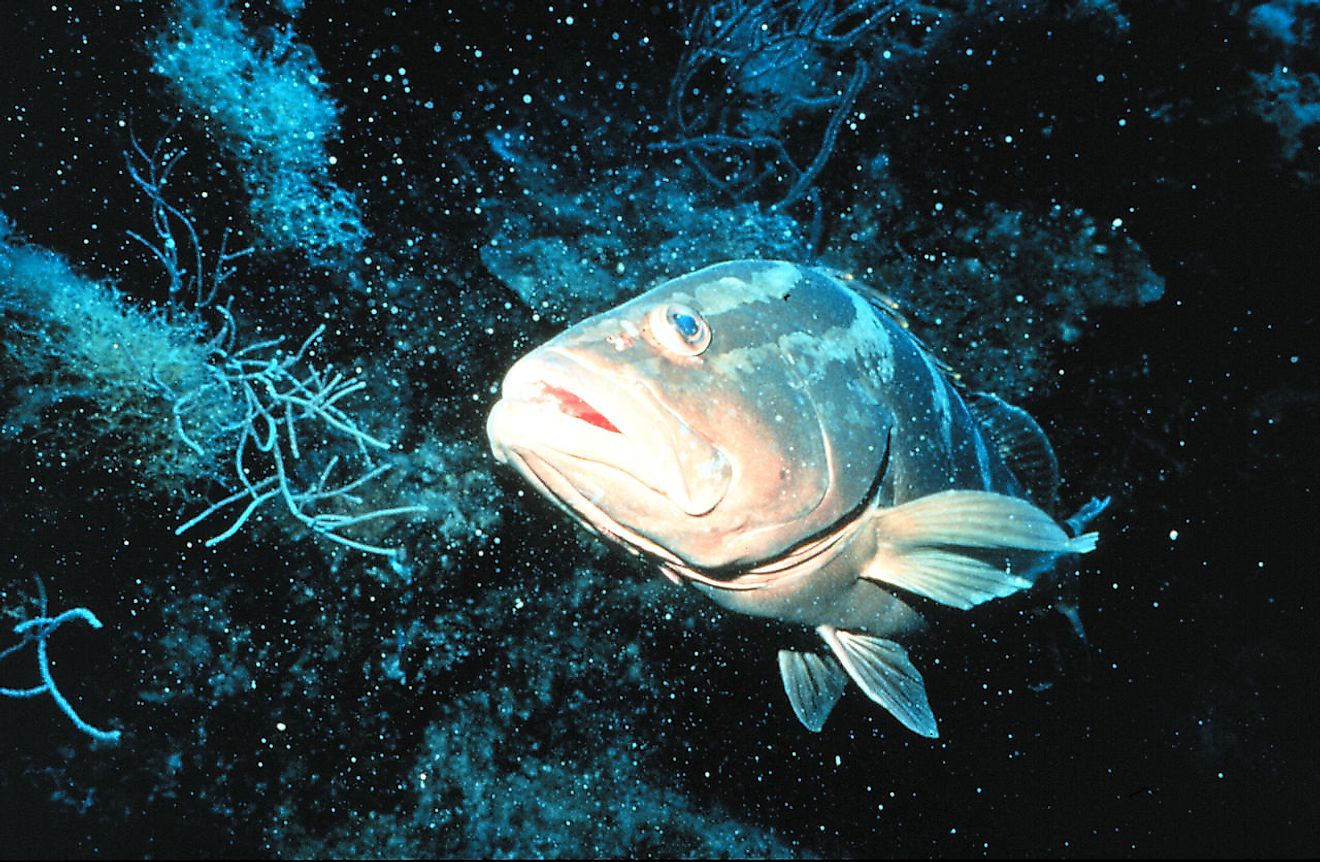
The Nassau grouper, a reef fish, is one of the critically endangered species found within the Gulf of Mexico. Once abundant, grouper have suffered for this availability by being overfished, and thus seeing a decrease in their population. While seen occasionally in the Gulf of Mexico, groupers are often found further south, in the Caribbean territories where reefs are plentiful. They are predatory fish which feed indiscriminately on reef life, but have also been targeted by fishers across Mexico, the Caribbean and Central America. They are now considered critically endangered on the ICUN Red List.
9. Scalloped Hammerhead Shark
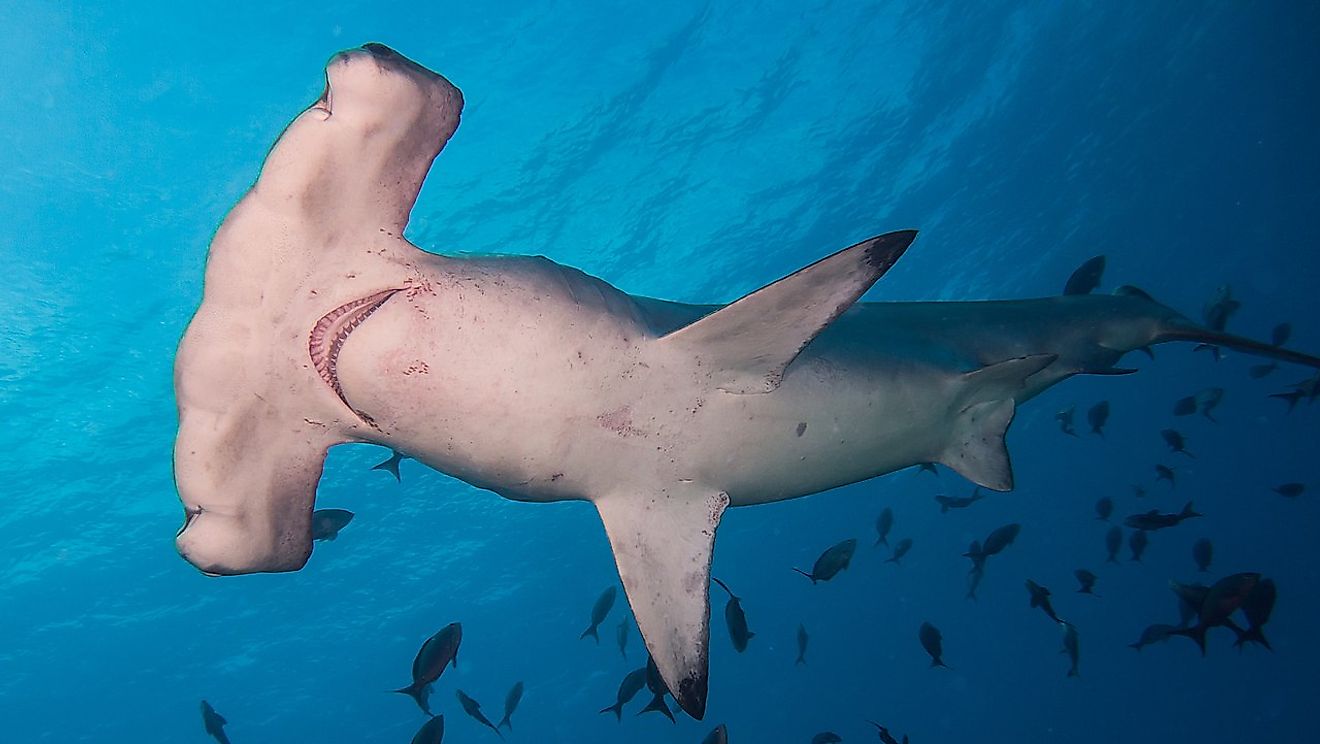
The Hammerhead Shark is so named for the distinctive hammer like shape of its head. While there are several types of hammerheads, all of which have vulnerable global populations, the scalloped (as well as the great hammerhead) are considered to be in the critically endangered category of the ICUN red list. Like many marine animals, one of the biggest threats to the survival of these sharks is the fishing industry. Not only can the hammerheads get caught unintentionally in nets and fish lines meant for other types of fish, but they are also a popular target for finning. Finning is the process of catching a shark merely in order to remove its prominent dorsal fin. These fins, which are then used in the much desired dish shark fin soup, have become a delicacy that has dramatically reduced the global population of many shark species. The sharks themselves are often thrown back into the ocean, where roughly 90% then die. It is a brutal process which has been hard to curb, and has played a major part in the continuing decline of the species.
8. Yellow-headed Amazon
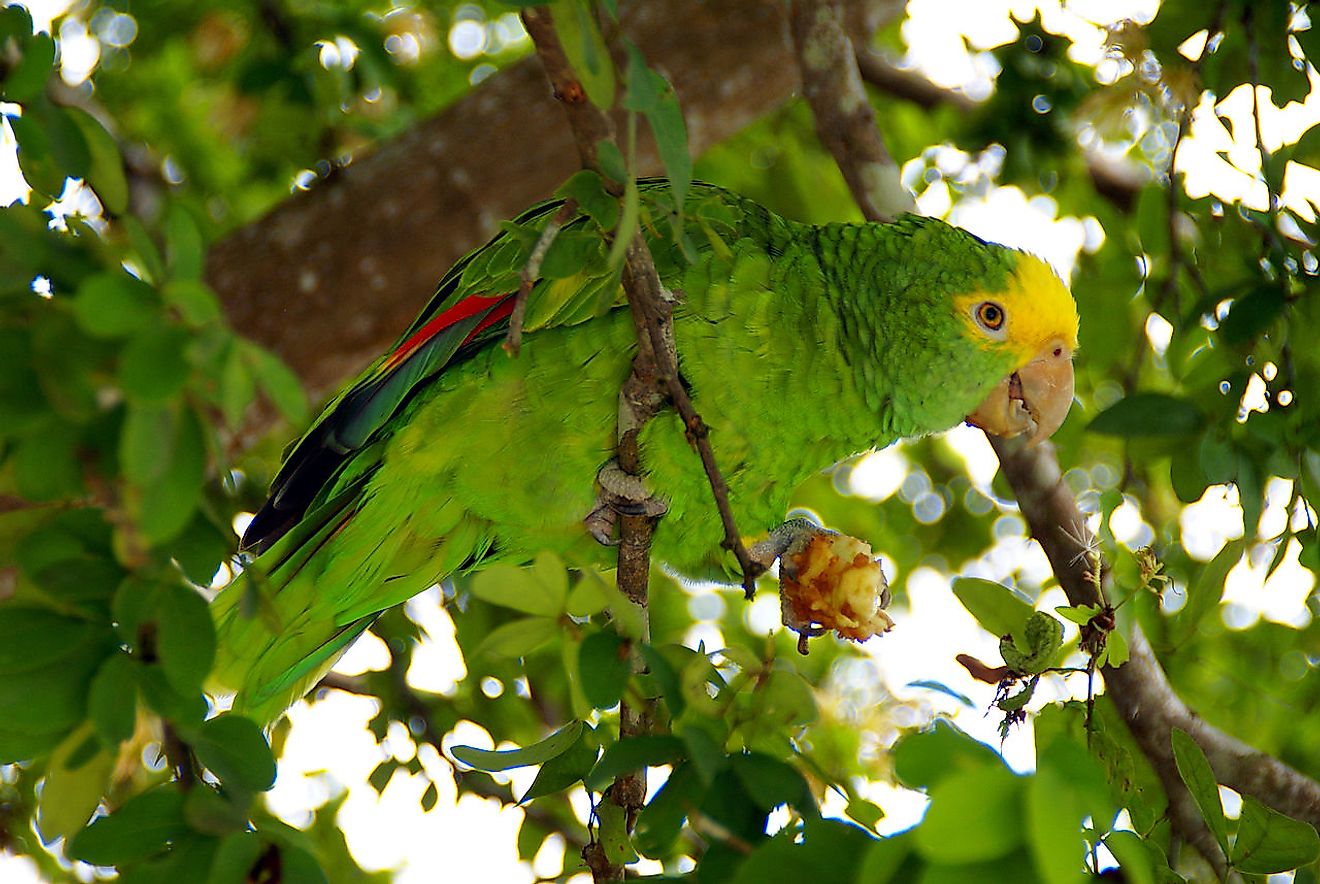
The yellow-headed amazon, or Amazona oratrix is an endangered species of parrot which lives in Mexico and parts of Central America. Its bright green colour and distinctive yellow head give the amazon that classic look often associated with pet parrots. This particular type of parrot is also known and sought after for being talkative, energetic, and a good singer. While there are restrictions on owning these parrots domestically, their popularity as pets has drastically impacted their populations in the wild. Not only are the parrots being captured for the exotic pet trade, but many of the birds die in the trapping or transportation processes.
7. Whale Shark
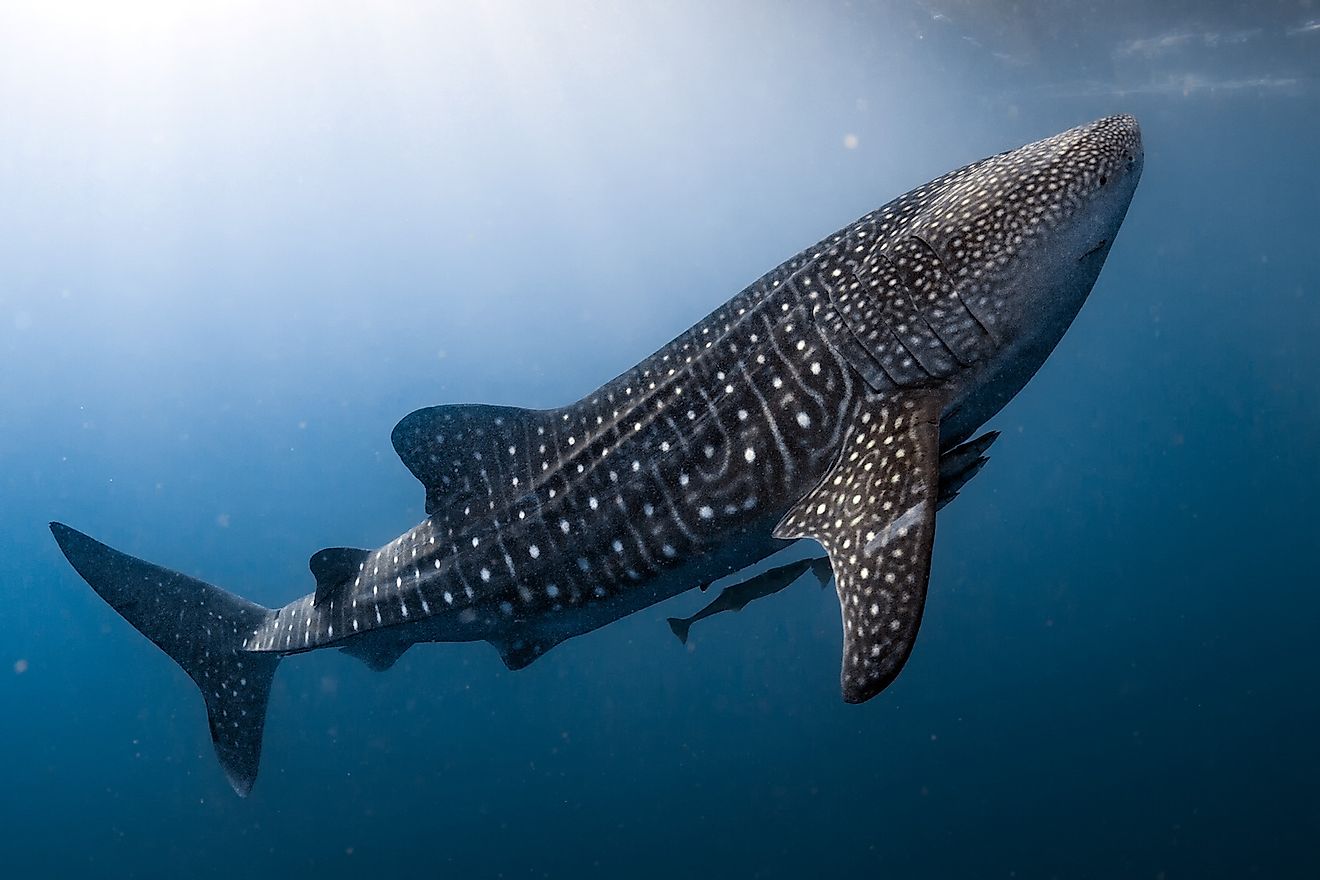
The whale shark, scientific name Rhincodon typus, is an endangered species with a decreasing population trend, according to the IUCN Red List. The Whale Shark is the largest fish in the world, measuring upwards of 60 ft., and can live for approximately 80 years. Much like whales, they have filtered mouths, and their diet consists primarily of plankton or other small fish. This, along with its massive size, is what has given this fish the ‘whale’ portion of its name. The whale sharks have a wide territory, living mostly in the open sea and can be found anywhere from the Gulf of Mexico, to the Philippines. These creatures are often called gentle giants, as they have a notoriously friendly and gentle relationship with humans. However, increases in fishing have caused an impact on their population, with bycatching and vessel strikes often leading to unintended deaths within the whale shark population. Other factors, such as the 2010 oil spill in the Gulf of Mexico have seen damage to both their natural habitat and food sources. It has been difficult to see a resurgence in this species due to their long lifespan and latent sexual maturity. It is unknown how many whale sharks currently exist in the wild.
6. Hawksbill Turtle
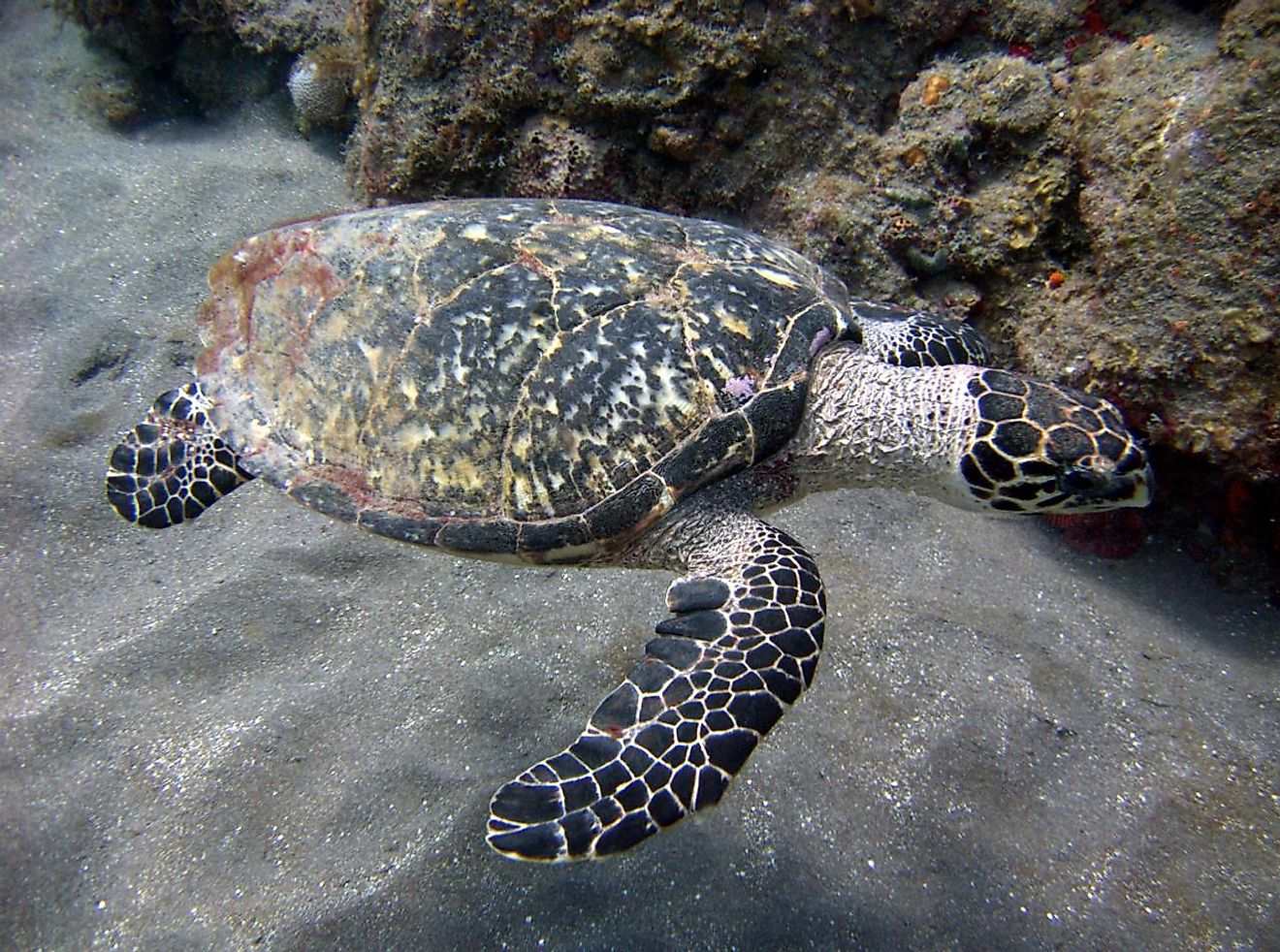
Listed as critically endangered on the ICUN red list, the Hawksbill turtle, or Eretmochelys imbricata is continuing to see a decrease in its global population. The Hawksbill is thus named due to the pointed beaklike shape of its head. They are one of the more well-known species of turtle visually speaking, and their shells have the mottled look that has given name to the famous ‘tortoiseshell’ pattern. Because of this, their shells are some of the most sought after, and the turtles have long been targeted by poachers looking to sell their shells. This once prominent marine creature has also seen threats from a variety of other sources, from tourism and recreation, to fishing, oil and gas drilling, and even to a lesser extent, climate change. Protective societies such as WWF have made a point to protect and educate the public about the plight of the hawksbill turtle, hoping to discourage such blackmarket trading and shine a light on the dangers of by catching and careless longline fishing. Satellite tracking has also been extremely helpful in tracking and accumulating data about the migratory patterns and habitats of these turtles. By pooling information, scientist and environmental conservationists are better able to educate and protect these regal sea creatures.
5. Baird's Tapir
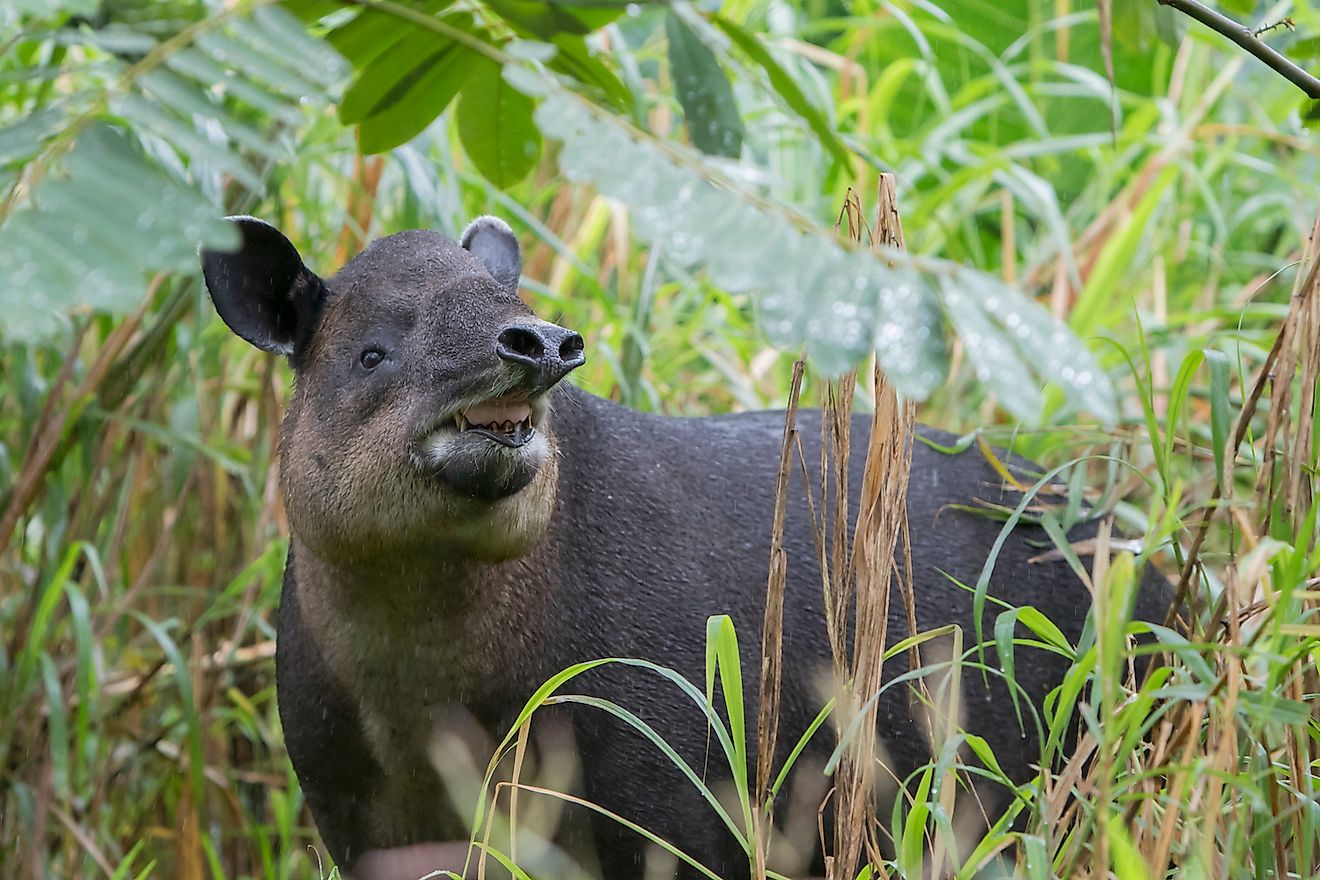
The Baird’s Tapir, or tapirus bairdii, and sometimes called the Central American Tapir, is a large herbivorous mammal native to Mexico and Central America. Both poaching and habitat loss have contributed to the decline of tapir populations in the wild, and the species is now listed as Endangered. Conservation and rehabilitation efforts have proven difficult, largely due to the animal’s low reproductive rate. A tapir has an average gestation period of 400 days, and only carries one offspring at a time, meaning any attempts to increase breeding are a long and slow process. Thankfully, due to their large size, the Baird Tapirs have very few natural predators, so a human change in how we see and care for these animals and their habitat could see an improvement in their population given time.
4. Mexican Praire Dog
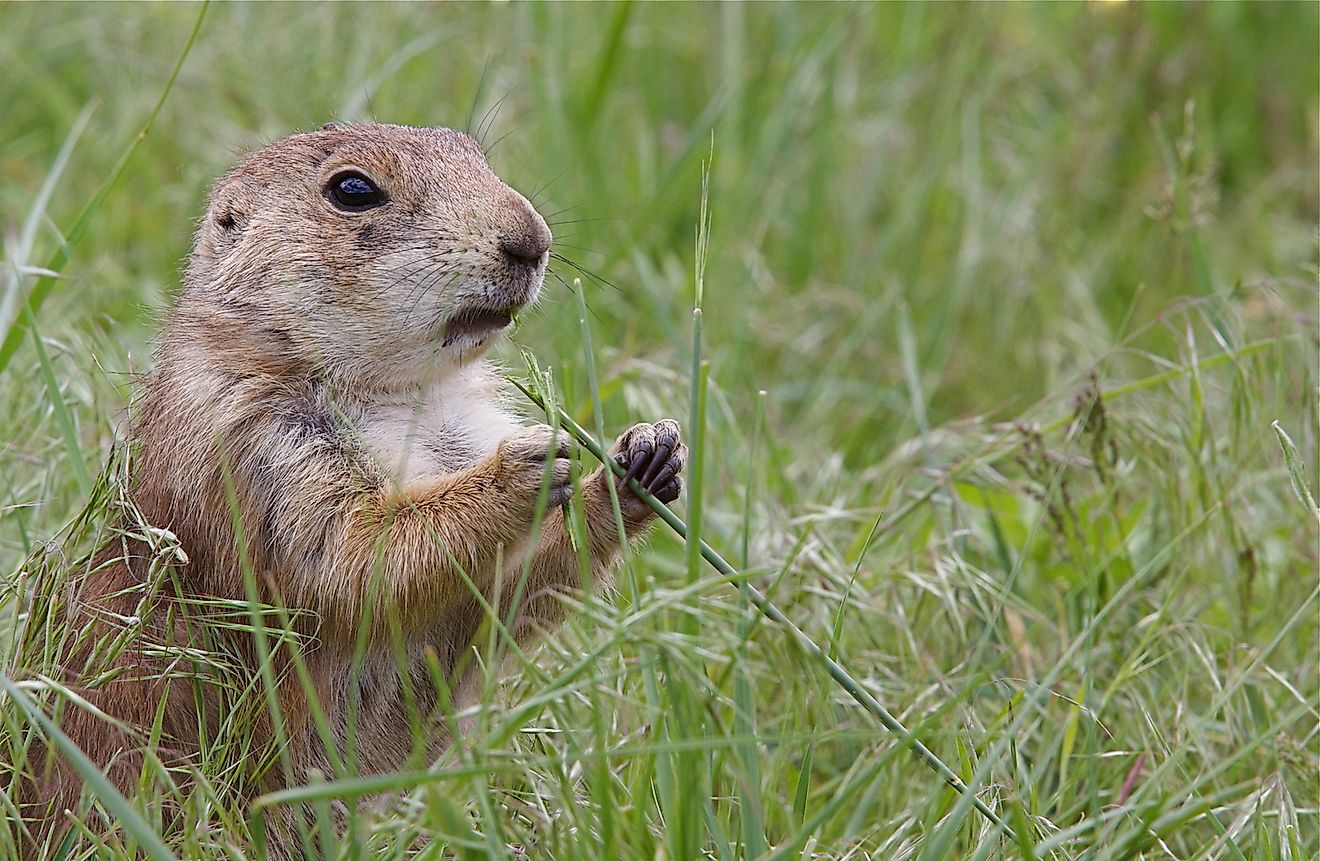
The Mexican Prairie Dog, Cynomys mexicanus, is endemic to Mexico, and has not been found or introduced anywhere else in the world, outside of captivity. They favour the Mexican Plateau, and much like other prairie dog species, arid grassland valley habitats. They dig and spend much of their time within an intricate burrow system, where they form fairly large social colonies. The Mexican Prairie Dog is listed as endangered on both the IUCN Red List, and the US Federal List. Agriculture has been one of the greatest detriments to the Prairie Dog population, both in terms of land modification and cattle herding, which can erode soil and reduce the abundance of suitable grasslands. Similarly, habitat ranges have become fragmented, restricting the species to smaller and smaller areas throughout Mexico.
3. Green Turtle
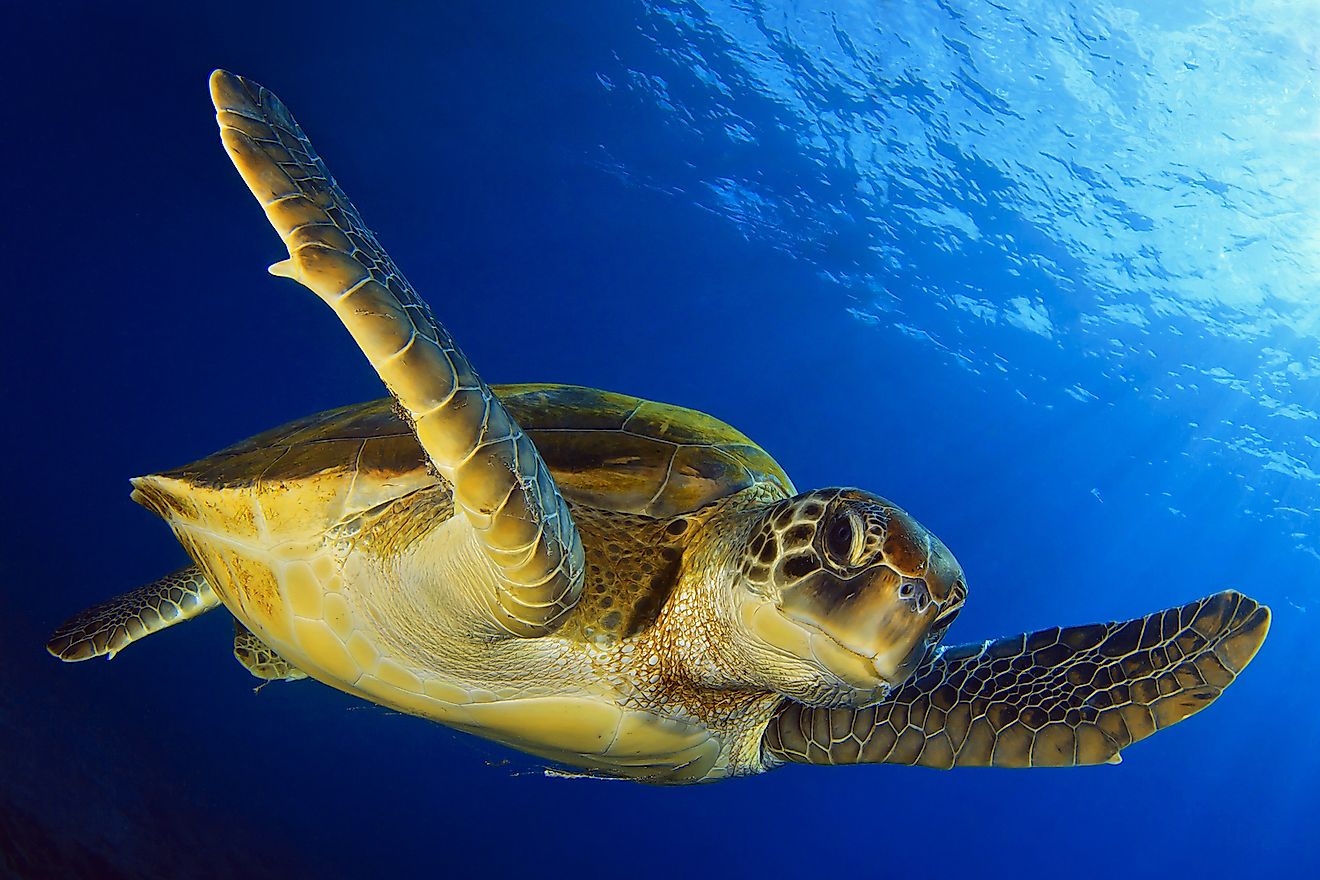
Green turtles, so named for their green-tinted skin, are another species of turtle which has found its way to the endangered species list. These majestic sea creatures have a wide ranging habitat, which includes the Gulf of Mexico and a range of other tropical and subtropical oceanic regions. Green turtles have become threatened primarily due to hunting and poaching. Both adult turtles and their eggs are often poached, not only by other animals, but by humans who see the turtles as a delicacy food source. Additionally, the turtles run the risk of being caught in tow lines and fishing nets which can trap and kill adults in the wild. If this wasn’t enough, tourism and development have also had a large impact on the beaches and natural nesting areas of much of the turtle population, putting both the adults and their nests at risk.
2. Vaquita
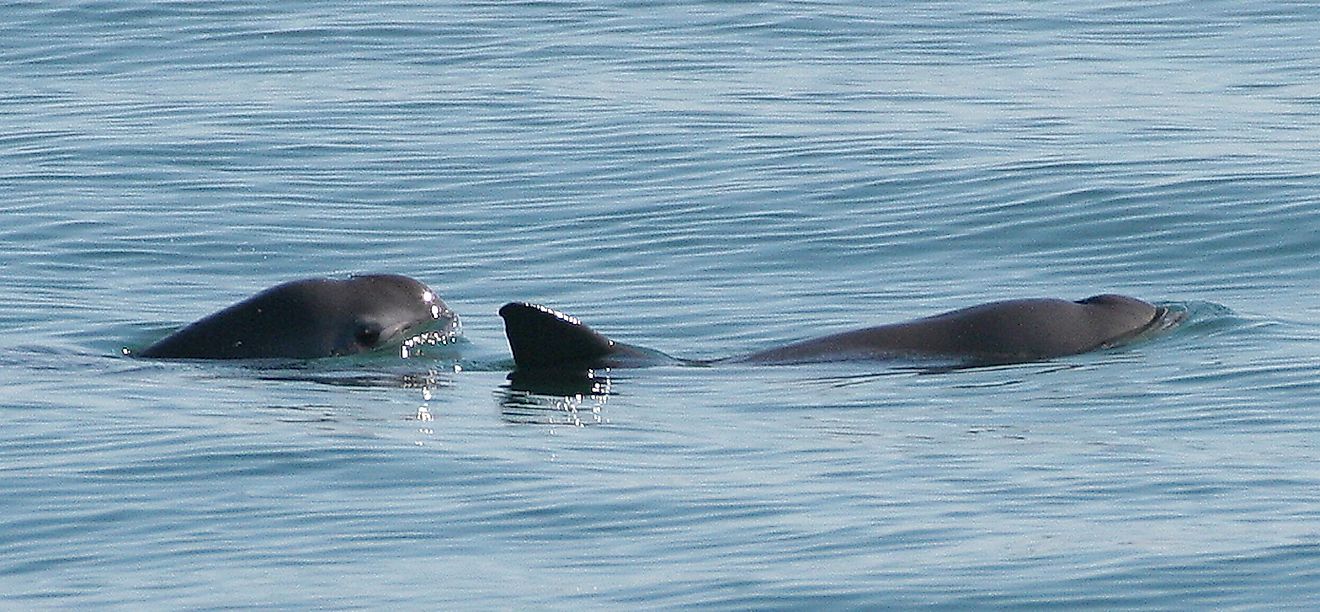
The vaquita, or phocoena sinu, has been called the world’s rarest marine mammal, and holds a Critically Endangered status on the ICUN Red List, with a decreasing population. There are said to be only 10 individual vaquitas remaining, and their extinction seems imminent. The vaquita is a type of porpoise, and lives in the oceanic habitat of the Gulf of California. Its drastic drop in numbers has been mainly due to fishing within protected marine areas. Like dolphins, whales and sharks, the vaquita often falls victim to wide netting and fish traps that do not discriminate between legal fish and any other creature which may become trapped in the net’s wake. Once caught, a large sea mammal can easily become entangled and snared, causing trauma or death. Strong efforts have been made to protect the remaining wild vaquitas, and patrol fishing grounds to help with net removal and enforce fines for illegal fishing operations.
1. Volcano Rabbit
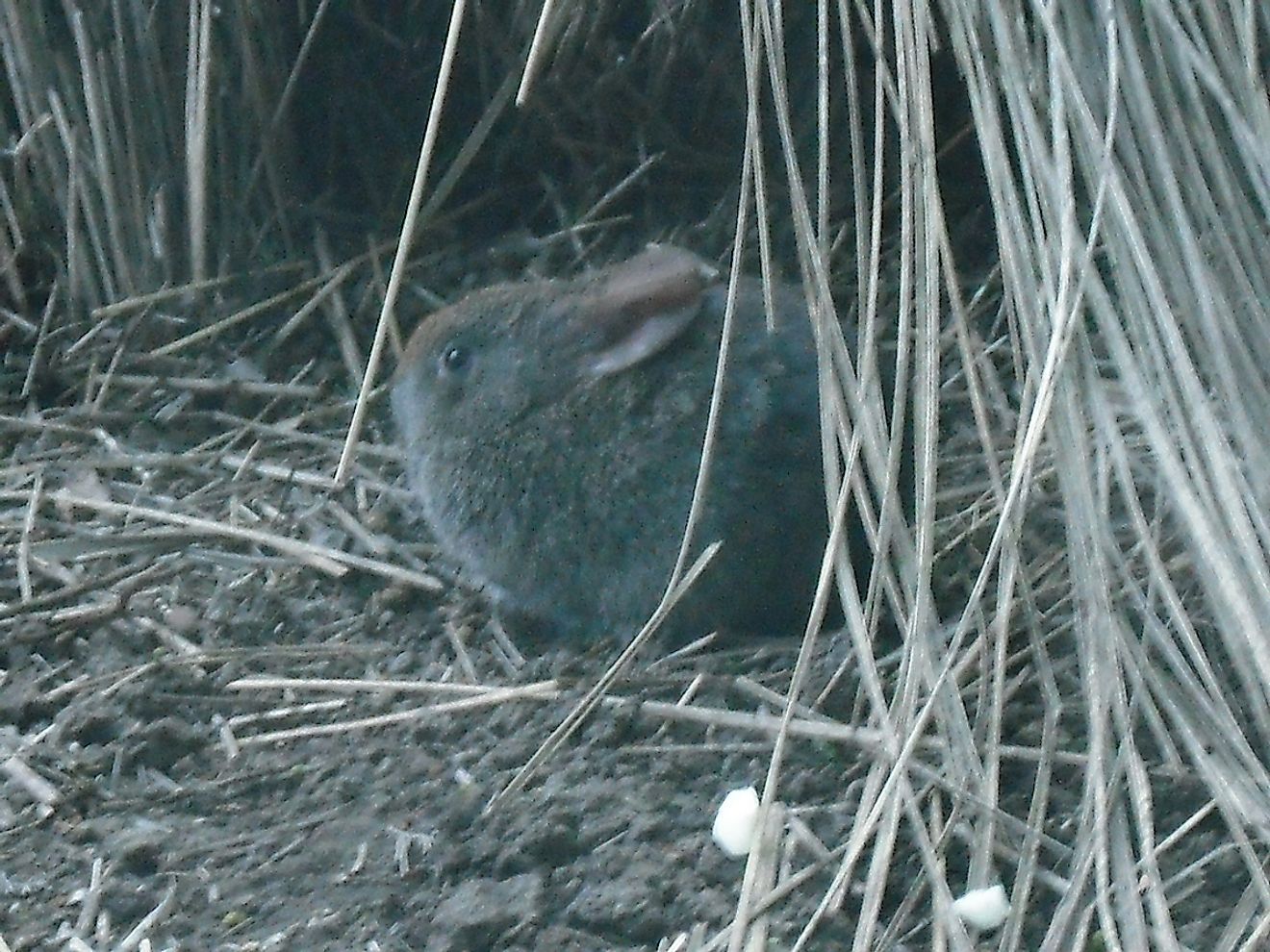
This tiny rabbit species, Romerolagus diazi, is native to Mexico, and lives in the mountainous, or volcanic regions. Populations in the wild are estimated to be around 1,200, and they have been deemed Endangered by the IUCN. While the natural habitat of these rabbits is primarily that of four volcanoes to the south east of Mexico City, much of their habitat has been fragmented by human development. Farming, infrastructure and afforestation have all infringed on the natural grasslands these rabbits call home, forcing them in to smaller and more segmented areas across Mexico. The slow but steady temperature increase in the area has also been a factor, forcing the rabbits to seek higher altitudes. These mountain ranges are less well suited to the rabbits, which prefer open expansive grasslands.







